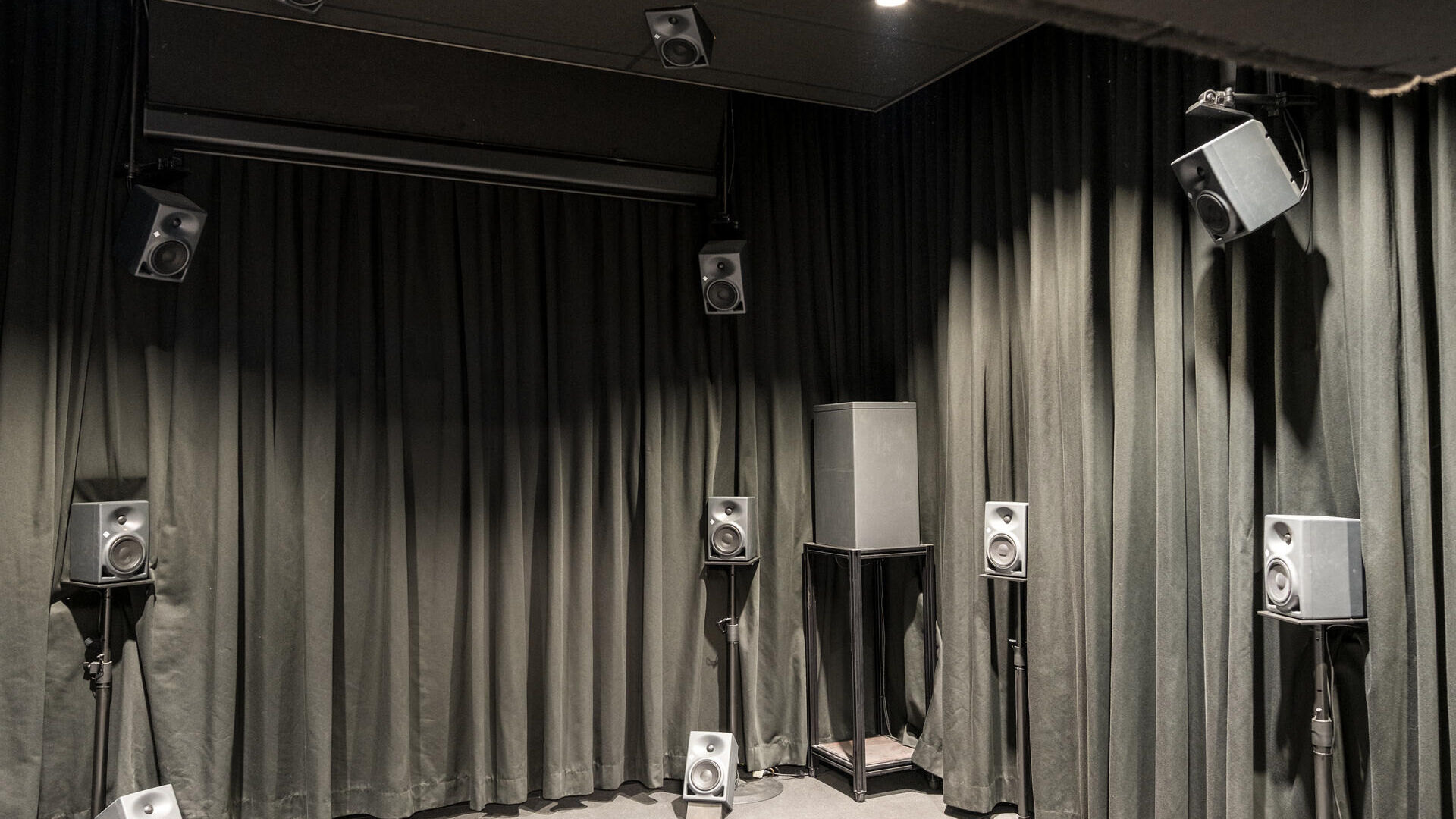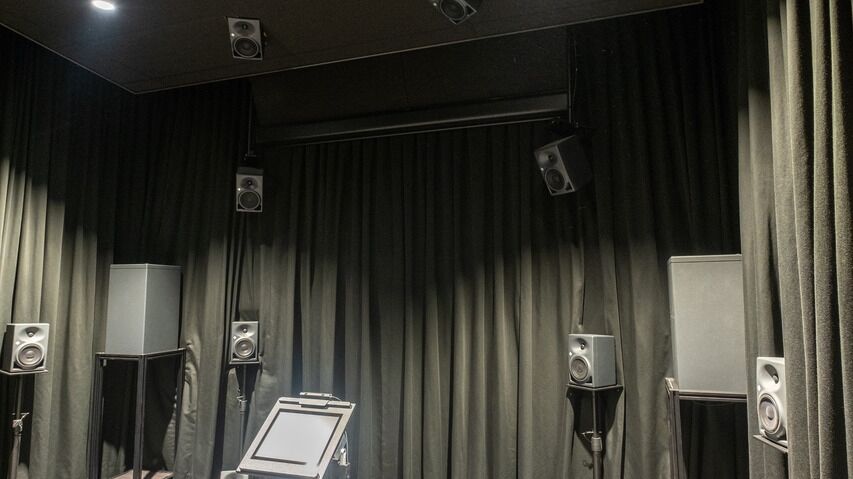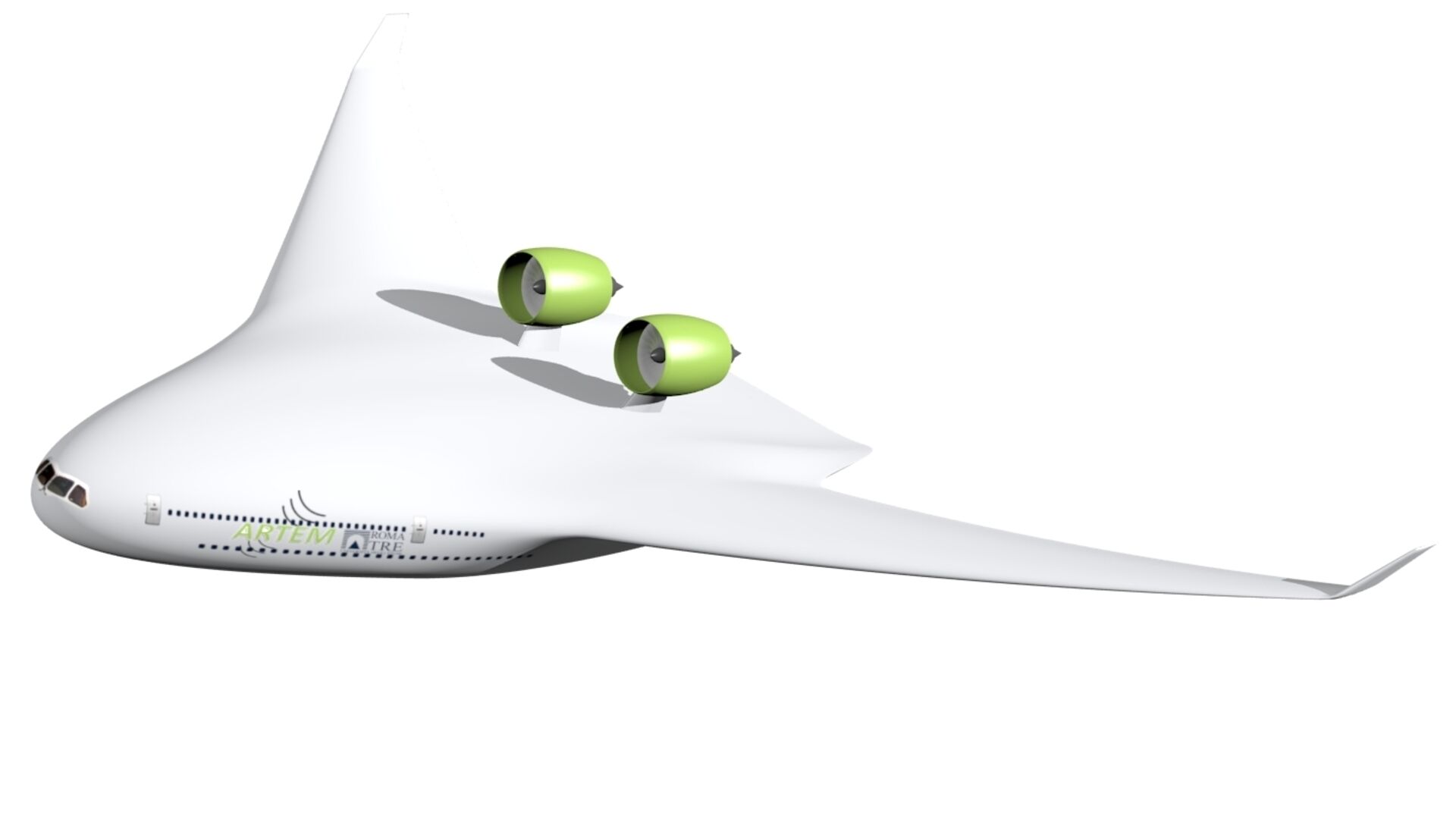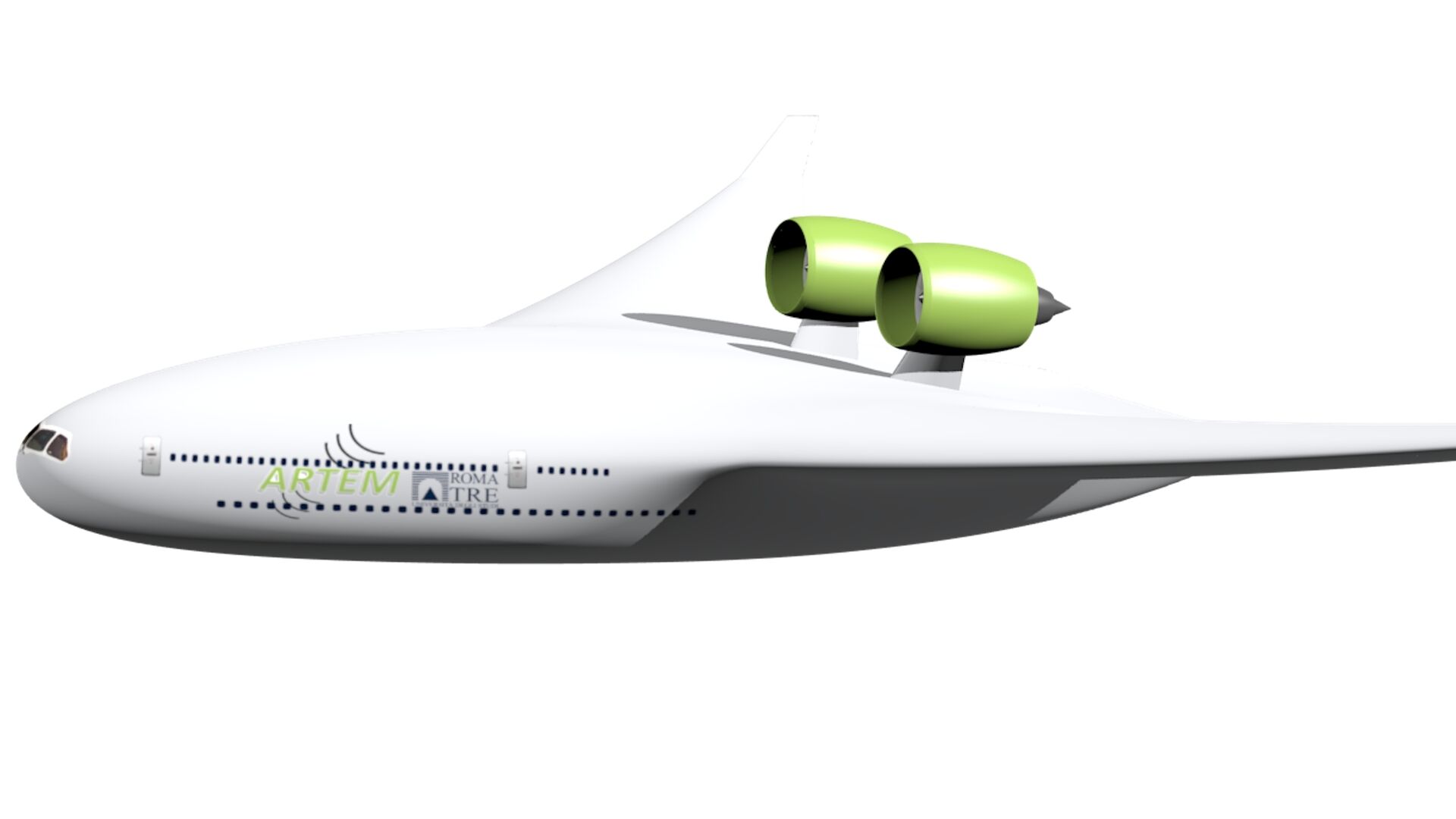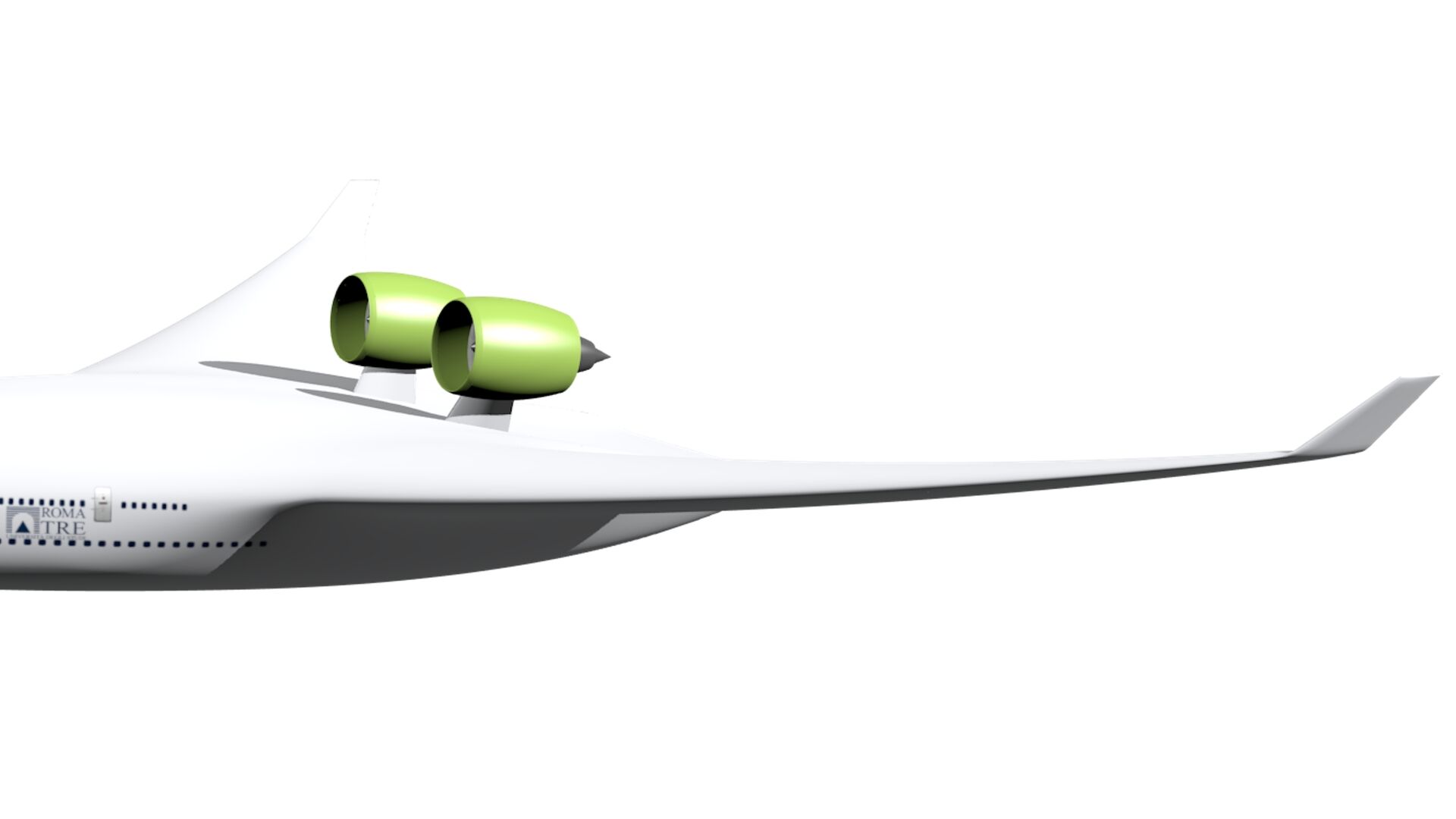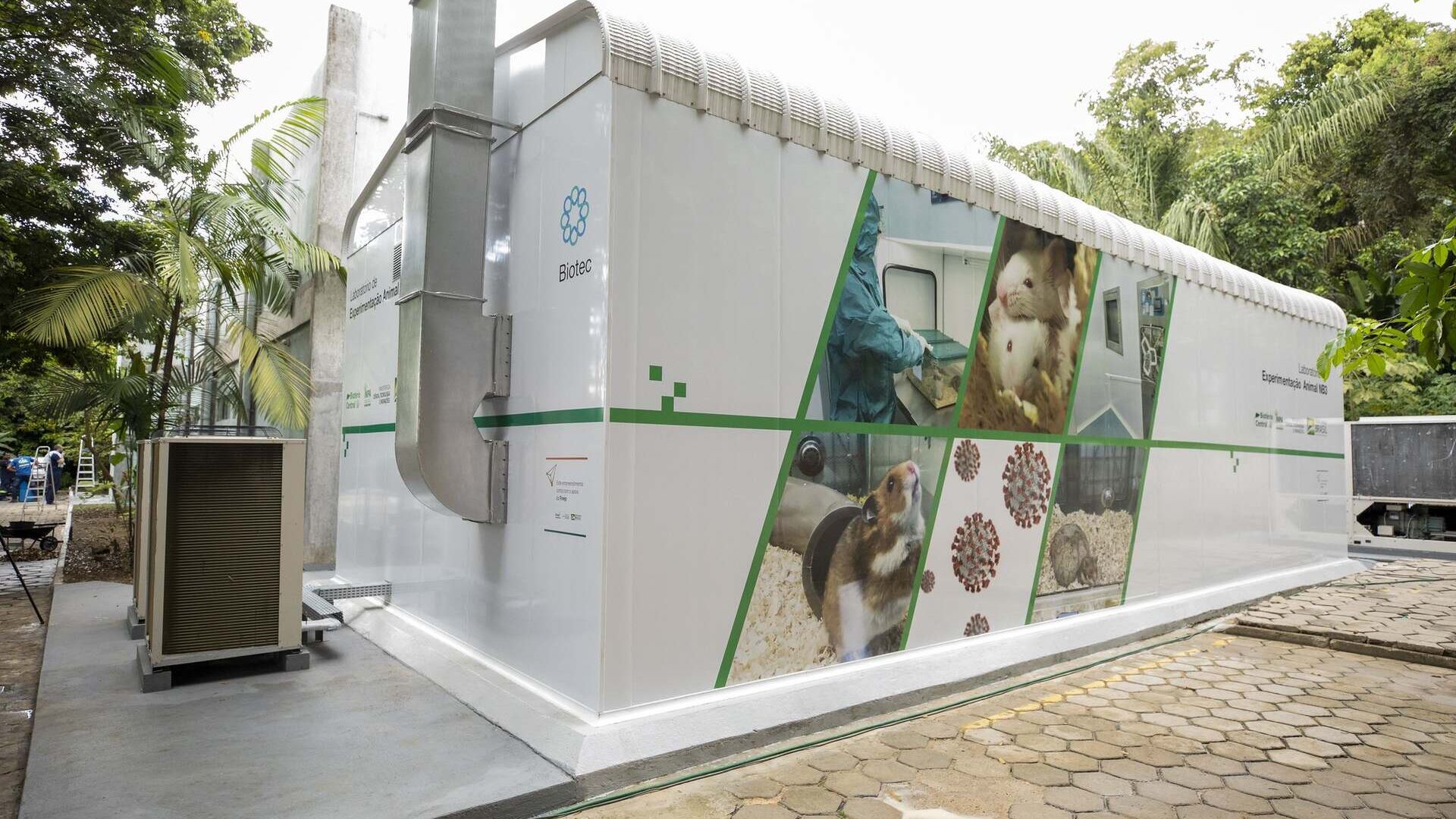Will the passenger jets of the future pass the… “noise test”?
From EMPA researchers in Switzerland real psychoacoustic simulations to evaluate the noise emissions of new aircraft with mixed wing bodies
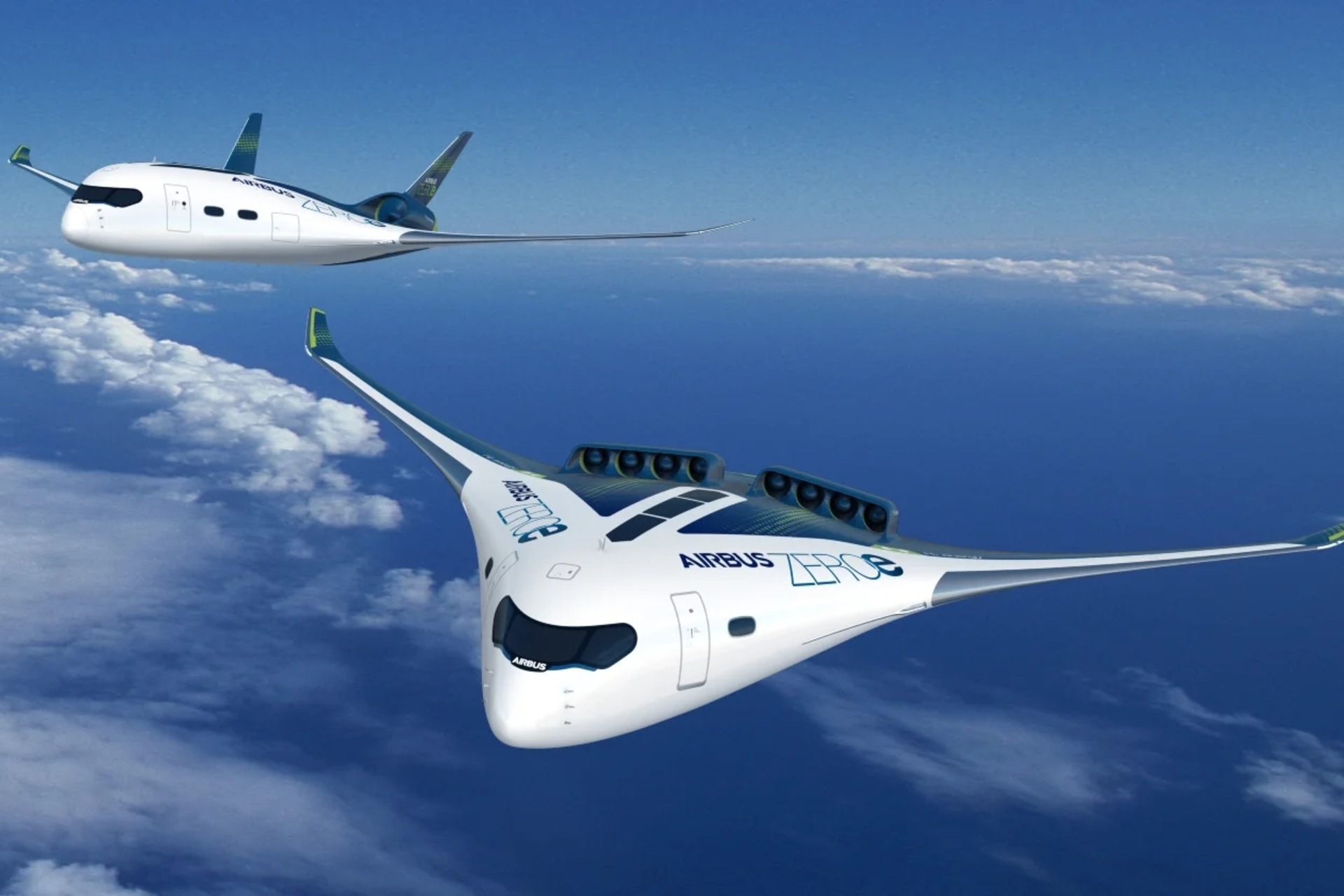
Aircraft noise is often a nuisance for people living near airports and flight routes and, in the worst case scenario, also a health hazard: from sleep disorders to cardiovascular diseases.
According to a report by the European Environment Agency, in 2017 around four million people in Europe were exposed to excessive levels of noise caused by aircraft.
The new types of aircraft with mixed wing bodies (BWB), whose fuselage blends seamlessly with the wings, which also have lower air resistance and lower fuel consumption, are seen as a beacon of hope to alleviate this burden too.
Furthermore, they would generate fewer noise emissions towards the ground if the engines were mounted on top of the fuselage.
A split aircraft in the shape of a "V" for sustainable aviation
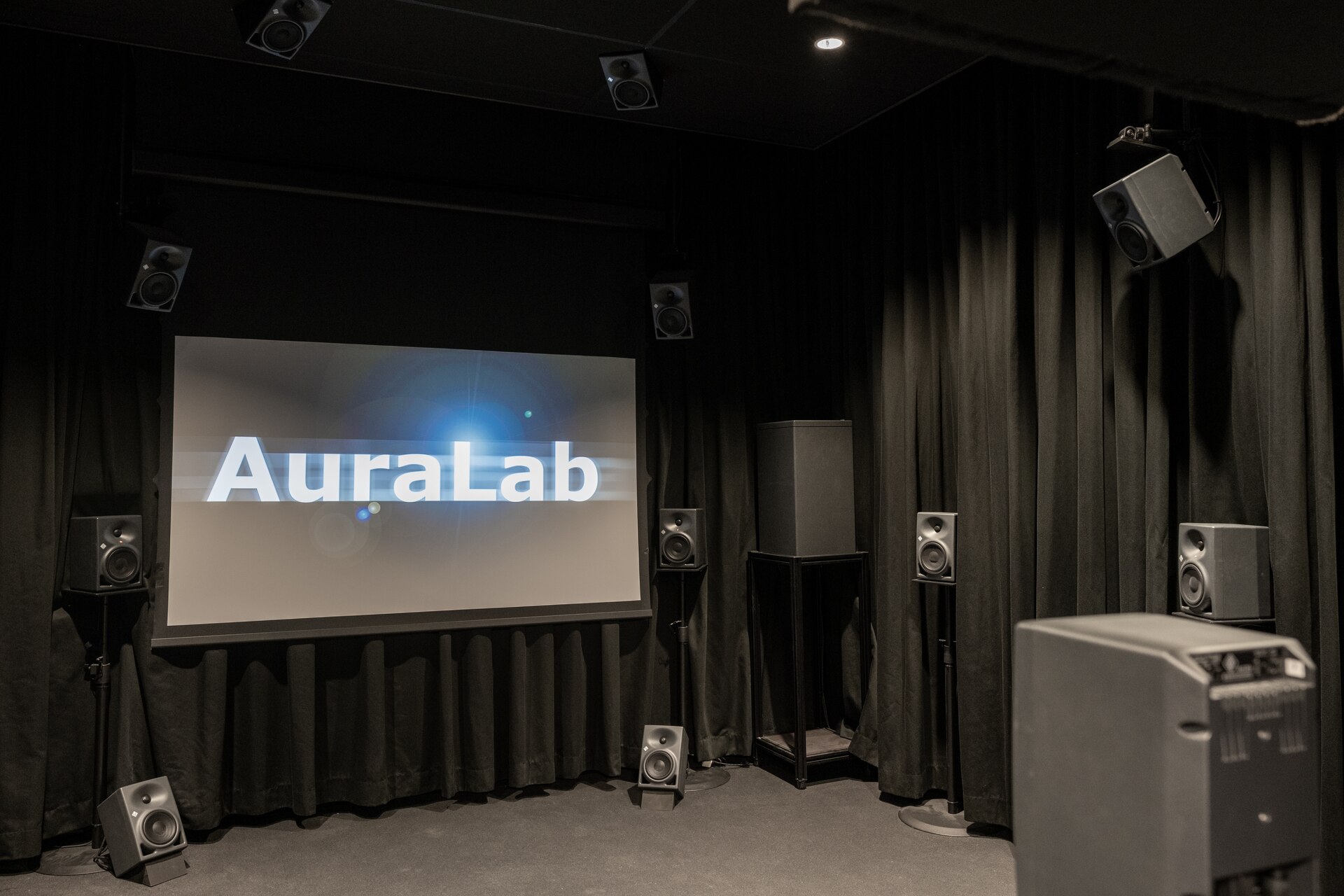
(Photo: EMPA)
At the heart of the European ARTEM project for 2035 and 2050 aircraft configurations
ARTEM (Aircraft Noise Reduction Technologies and related Environmental iMpact), a major European Union study on aircraft noise, is a five-year research project that started in late 2017 and focuses on innovative noise reduction technologies for aircraft configurations. aircraft of 2035 and 2050.
First, innovative approaches have been developed to reduce aircraft noise at its source.
Secondly, the project addressed concepts for effectively dampening engine noise and other noise sources using new materials.
New technologies have led to the design of a future jet with a mixed wing body.
The large-scale project involved 24 partners from ten European countries, including the French Office National d'études et de Recherches Aérospatiales (ONERA) and the German Aerospace Center (DLR), which coordinated the project, the University of Rome III in Italy, and the Federal Polytechnic of Lausanne.
ARTEM was funded under the EU's Horizon 2020 programme.
FluxJet is the train-plane hybrid that will revolutionize our travels
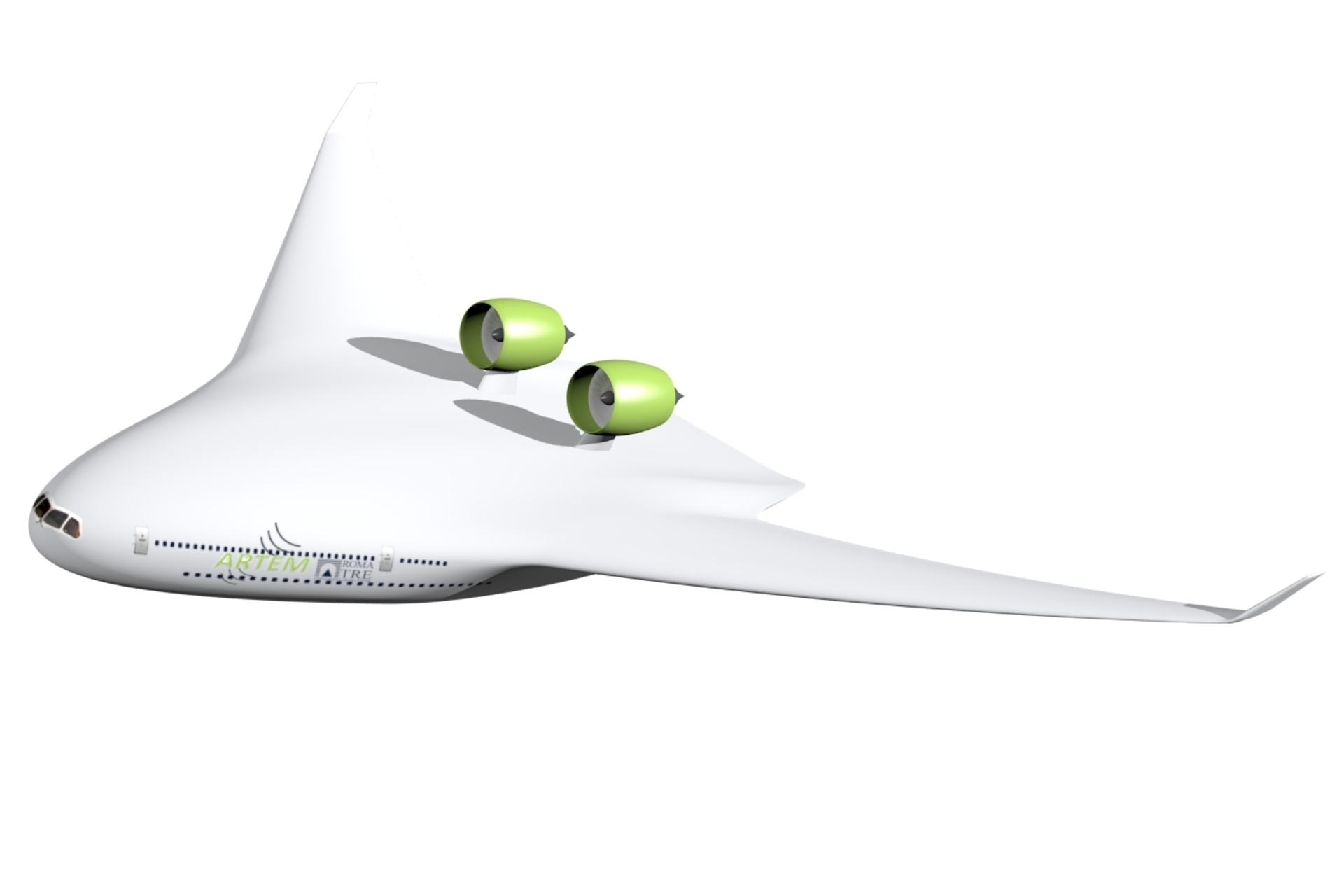
(Illustration: Umberto Iemma/Roma Tre University)
Auralization created in the laboratory: Reto Pieren, Axel Heusser and Beat Schäffer at work
Although the noise emissions of these aircraft can be estimated with simulation tools, their disturbing and stressful effect on people can only be realistically recorded by taking into account the subjective perception of those affected.
Acoustics experts at the Federal Materials Testing and Research Laboratory have been successfully pursuing the so-called “auralization” approach for auditory impressions for years, analogous to visualization for the eye, for example to study the effects of railway noise on people.
Reto Pieren, Axel Heusser and Beat Schäffer from the Laboratory for Acoustics and Noise Control at EMPA also used this experience in the European project ARTEM (Aircraft Noise Reduction Technologies and related Environmental iMpact), in which numerous partners developed long-term airplane concepts low-noise beam, with a specially designed BWB and several engine variants.
The consortium also considered other noise reduction technologies, such as the trailing edge with optimized “Krüger flaps” or modern geared turbofan engines, with a large ratio between the air flow outside the combustion chamber and the Hot exhaust jet airflow, which significantly reduces noise.
International aviation will now focus on sustainable fuels
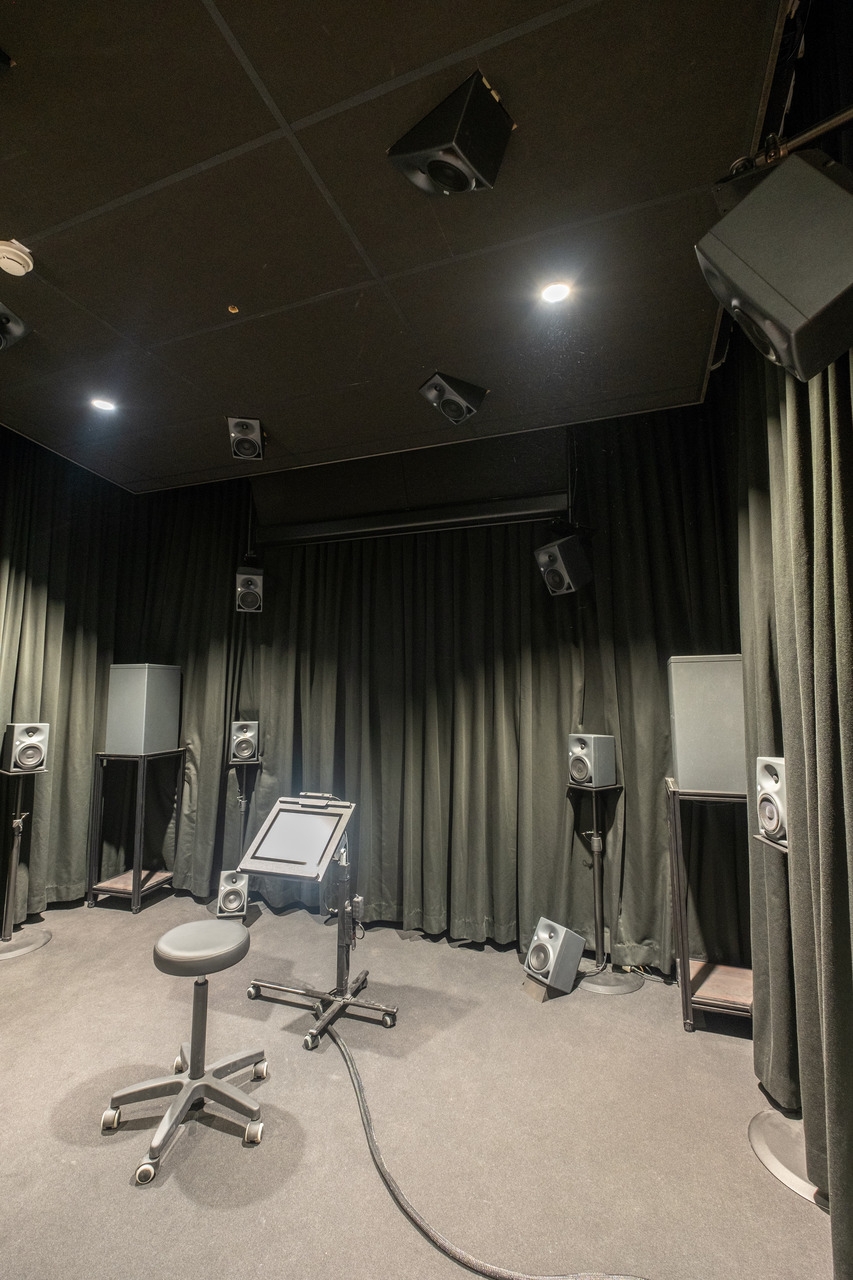
(Photo: EMPA)
Very elaborate experiments in the AuraLab with people aged between 18 and 61
How would these new long-range planes for about 400 passengers perform compared to conventional planes?
The team from the Federal Materials Testing and Research Laboratory published the results in the journal “Aerospace Science and Technology”.
Based on the laws of physics, experts generated simulations of noise from overflights of inhabited areas in a purely synthetic way, using computer programs.
They verified these simulations with records of current arrivals and departures of commercial aircraft around Zurich Airport.
Since the simulated noise corresponded well to the measured data, it was possible to use it for comparison with simulations of the new BWB aircraft concept.
Yes in Bologna to the strategic forum for the aerospace supply chain
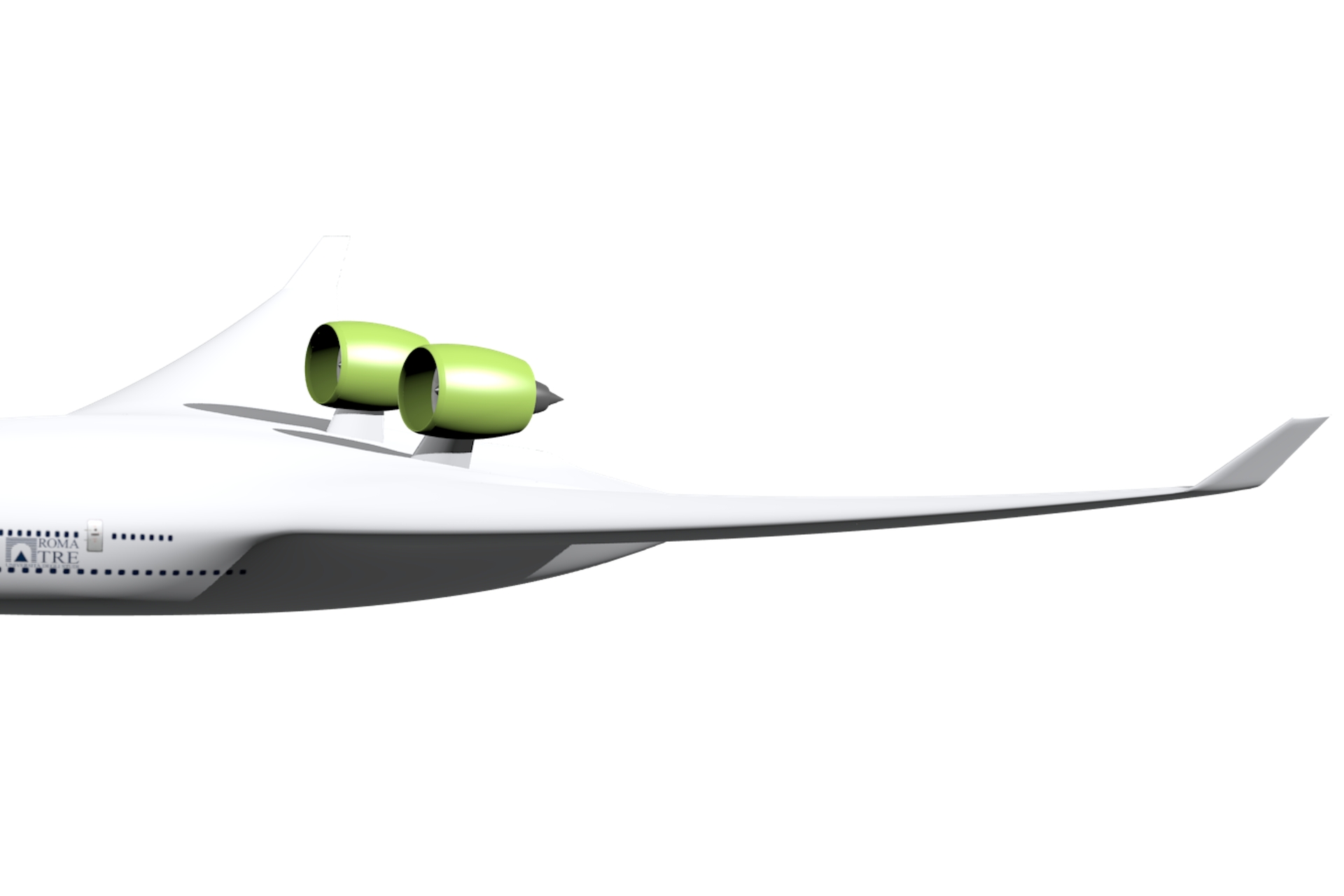
(Illustration: Umberto Iemma/Roma Tre University)
31 people aged between 18 and 61 were asked if they were disturbed or annoyed
To determine how much the noise emissions of various airliners disturb people when they fly over them, 31 people aged between 18 and 61 took part in rather elaborate experiments in EMPA's AuraLab.
The spatial simulations of the precisely arranged loudspeakers included, after an initial familiarization phase, 36 overflights: takeoffs and landings of conventional and innovative aircraft types, each in different flight phases.
These noise scenarios also included details such as the position of the flaps or landing gear, as well as atmospheric conditions, such as turbulence or sound reflections on the ground.
After the experiment, the subjects filled out questionnaires in which they reported their subjective impressions, using a common and standardized 11-point scale ranging from 0 (“not at all disturbed or annoyed”) to 10 (“extremely disturbed or annoyed ”).
It is also asked how familiar the respective sound event was to them.
Less noisy and more sustainable landings and approaches to airports

(Photo: EMPA)
The BWB was rated 4,3 units less noisy than the conventional passenger jet
The results: The new BWB aircraft is rated 4,3 units quieter than the conventional passenger jet.
This is an obvious difference, also due to the fact that the virtual aircraft in the simulation was equipped with additional noise reduction technologies or particularly low emission engines.
Furthermore, the surveys showed that takeoffs of this type of aircraft left a sound impression that seemed less familiar to participants, indicative of unusual acoustic characteristics, which probably positively influence the perception of annoyance.
Of course, it is difficult to predict which BWB aircraft variant will prevail in the future, given the numerous possible hypotheses.
According to EMPA researcher Reto Pieren, one thing is certain, however.
“The greatest contribution to noise reduction undoubtedly comes from the shape of the aircraft, which shields the sound emissions of the engine downwards”, says the acoustics expert.
“Other noise reduction technologies only account for about 15 percent of the annoyance reduction”.
Raffaella Greco: “From San Marino Aerospace to a sector cluster”
Aircraft with innovatively designed fuselages have many advantages and are already under development: the design of one of these special aircraft is developed within the ARTEM (Aircraft noise Reduction Technologies and related Environmental iMpact) project (Illustration: Umberto Iemma/ University of Roma Tre)
The new types of aircraft with mixed wing bodies (BWB), whose fuselages blend seamlessly with the wings, also featuring less air resistance and lower fuel consumption, are seen as a beacon of hope for reducing the noise, especially if the engines were mounted on top of the fuselage (Illustration: Umberto Iemma/Università degli Studi Roma Tre)
The ARTEM (Aircraft noise Reduction Technologies and related Environmental iMpact) project is a five-year research project that started at the end of 2017 and focuses on innovative noise reduction technologies for 2035 and 2050 aircraft configurations (Illustration: Umberto Iemma/Università degli Studi Roma Tre )
The ARTEM virtual noise assessment for passenger jets of the future
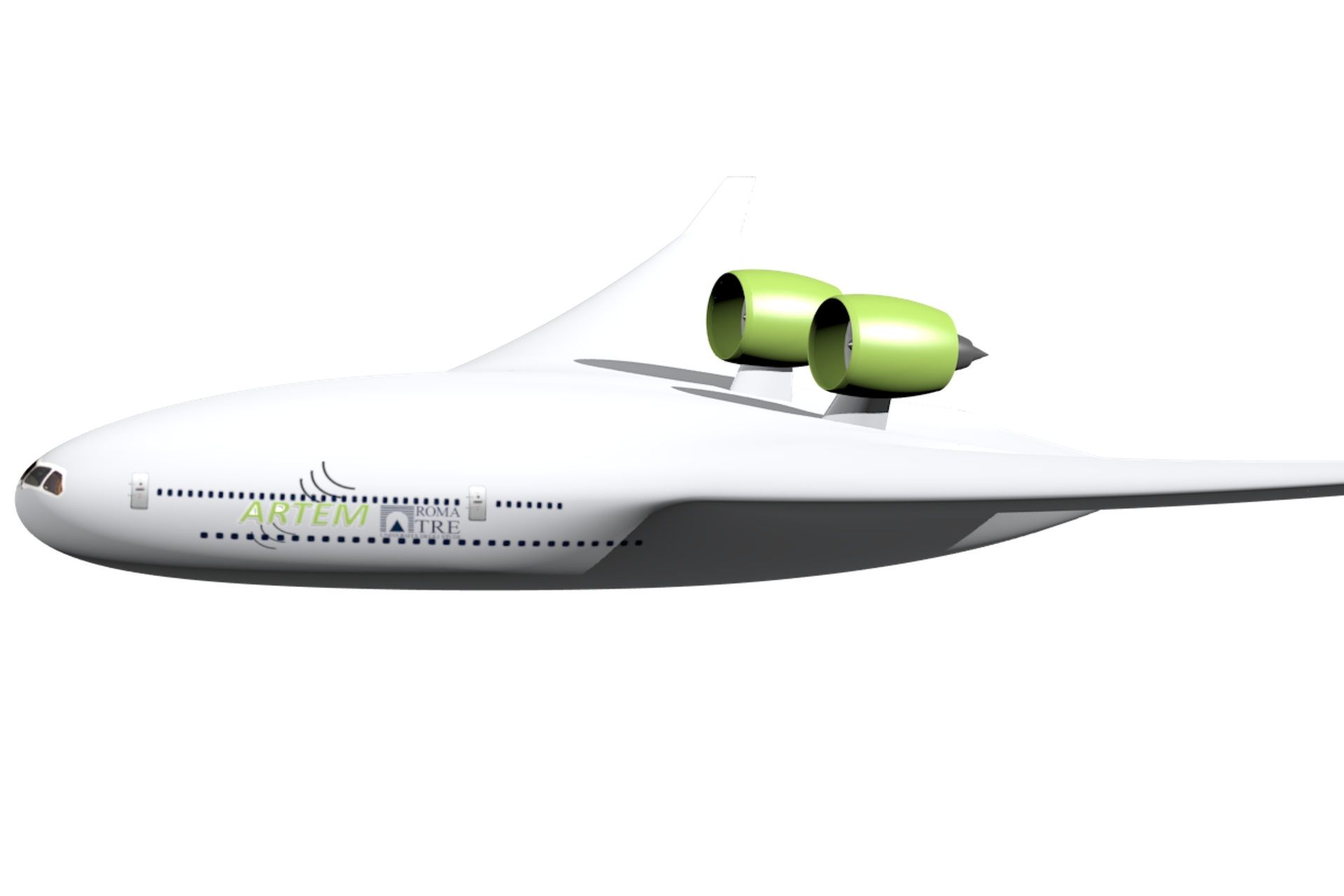
You may also be interested in:
Video, the unique ecosystem of the Lötschental alpine forest
The ideal place to study the growth of trees at different altitudes in the Canton of Valais is described in a very innovative WSL film
by Editorial staff Innovando.NewsEditorial staff of Innovando.News
Taam Ja' is the deepest “blue hole” in the world: the discovery
Marine cavity probed off Yucatan Peninsula, found four times deeper than previous record-breaking sinkhole in Belize
In Brazil the first meeting in the world between biosafety and synchrotrons
In Campinas, a NB4 level maximum biological containment laboratory will be connected to the light sources of a particle accelerator
In Alto Adige today EDIH NOI is the new point of reference for AI
4,6 million euros from the PNRR fund will be allocated to Bolzano for services to local companies in the digitalisation of intelligence…
by Editorial staff Innovando.NewsEditorial staff of Innovando.News

